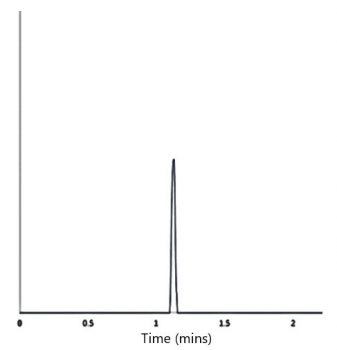Detection of Ethylene Oxide (EO) Residue in Medical Protective Products
Introduction
In 2019, Corona Virus or Covid-19, emerged worldwide with a major challenge for human health. Subsequently, the demand and production of medical protective products increased dramatically, including face masks and protective suits. Ethylene Oxide is commonly used during the sterilization of protective equipment. Ethylene Oxide is a low temperature gas (volatile) which can efficiently penetrate protective equipment, and its packaging, when used at a low temperature and under vacuum. Although widely used as a sterilising agent, Ethylene Oxide possesses several physical and health hazards when an individual is exposed to high levels. Acute exposure can lead to respiratory irritation, shortness of breath, headaches and nausea. Long term effects include cancer, mutagenic changes and neurotoxicity.
Due to the long term health issues caused by exposure to Ethylene Oxide, it is critical that the amount of residue remaining on the protective equipment is measured and monitored. SCION Instruments developed a gas chromatography method with Headspace for the detection of Ethylene Oxide. The method developed was based on the standard Chinese test method GB/T 16886.7-2015 and GB 19083-2010.
Experimental
A SCION 456 GC with Flame Ionisation Detector (FID) coupled to a Tekmar HT3 Headspace Autosampler was used for the detection of Ethylene Oxide residues in medical protective products. Figure 1a and 1b shows the instrumentation used throughout this application.

Figure 1a. HT3 HS Autosampler

Figure 1b. SCION 456 GC-FID
Analytical conditions of the Headspace Autosampler and 456-GC can be found in Tables 1a and 1b, respectively.

Table 1a. HT3 HS Autosampler Conditions

Table 1b. SCION 456 GC Conditions
Analytical standards of Ethylene Oxide were prepared in concentrations of 0.4, 1, 2, 4 and 10µg/mL to form a calibration graph. Two different medical grade face mask samples were also analysed using the above parameters with the concentration of Ethylene Oxide residue determined.
Results
Figure 2 shows the chromatogram of the Ethylene Oxide standard at 0.4µg/mL.

Figure 2. Chromatogram of 0.4 µg/mL Ethylene Oxide
Figure 3 details the calibration curve of Ethylene Oxide over five different concentrations.

Figure 3. Ethylene Oxide calibration curve
Ethylene Oxide exhibited excellent linearity over a concentration range of 0.4µg/mL to 10µg/mL, with an R2 value of 0.9998.
Figures 4 and 5 show the chromatograms obtained when two different protective face masks were analysed.

Figure 4. Chromatogram of Ethylene Oxide in Face Mask 1
Both face mask samples contained Ethylene Oxide. Table 2 details the calculated concentration of both samples, using the calibration curve and peak areas for concentration determination.

Table 2. Ethylene Oxide content in face mask samples
The two face masks contained 2.2µg/mL and 2.9µg/mL of Ethylene Oxide. The Scientific Committee on Occupational Exposure Limits (SCOEL), part of the European Commission, states that when wearing a medical face mask for eight hours a day, the exposure of Ethylene Oxide must not exceed 5µg/mL whereas China’s National Health Commission states that exposure must not exceed 1µg/mL during an eight hour period. Additionally, GB 19083-2010 specifically states that the total concentration of Ethylene Oxide in the face mask must not exceed 10µg/g.
Both facemasks analysed were <10µg/g which meets the criteria of GB19083-2010. The amount of residual Ethylene Oxide is lower than the maximum value, proving these masks are safe for use. However, long term exposure to Ethylene Oxide was not tested.

Figure 5. Chromatogram of Ethylene Oxide in Face Mask 1
Repeatability testing was also performed using three of the analytical standards at a concentration of 0.4µg/mL, 2µg/mL and 10µg/mL, respectively. Table 3 details the repeatability values.

Table 3. Repeatability values of Ethylene Oxide
Excellent repeatability was observed for the three different concentrations of Ethylene Oxide when analysed by Headspace Gas Chromatography, highlighting the robustness of the SCION 456 GC.
Conclusion
SCION Instruments developed a gas chromatography method with Tekmar headspace autosampler for the low level determination of Ethylene Oxide in medical protective products, in under two minutes. Ensuring low limits of residual Ethylene Oxide is critical for protecting the health and well being of users, especially during widespread use of such materials, due to the Corona Virus. The SCION 456 GC displayed excellent detection limits, linearity and repeatability highlighting the robustness and accuracy of the gas chromatography system.
Download Application Note
Download the complete Application Note: Detection of Ethylene Oxide (EO) Residue in Medical Protective Products
SCION Gas Chromatography Analyser
A SCION Gas Chromatography Analyser was used to conduct this research. Providing excellent solutions for Environmental, Oil and Gas and Chemical industries, find out more about Scion GC Analysers.
Alternatively if you would like to speak to a member of our team for more information, please don’t hesitate to get in touch. We look forward to being of assistance.
To stay in the loop regarding future research and articles from SCION Instruments, please take a minute to join us on social media and sign up to our eNewsletter.
